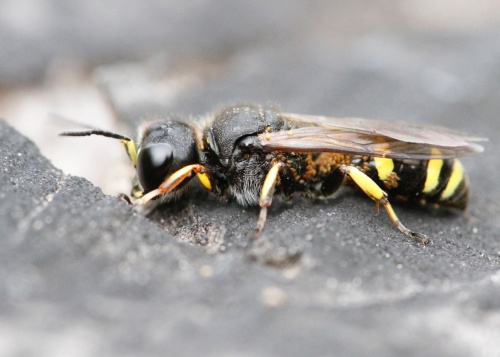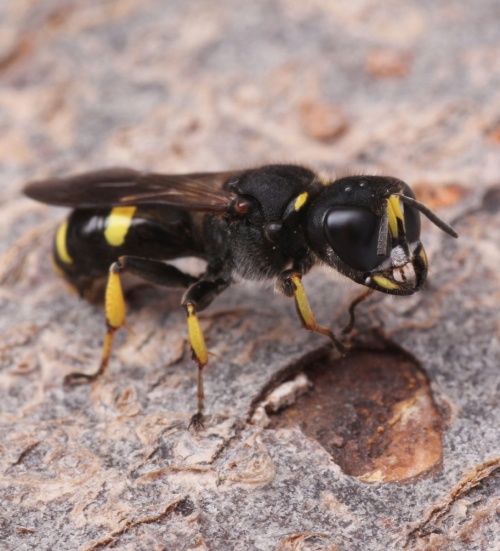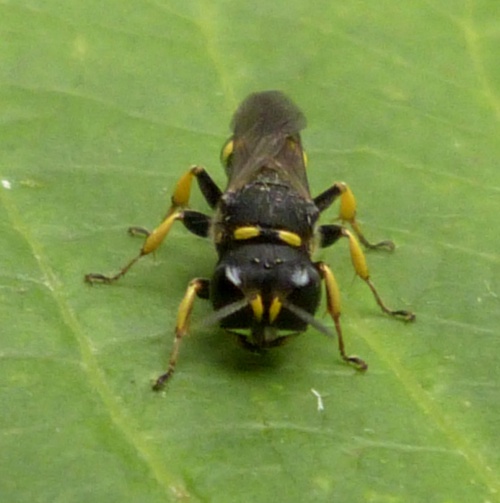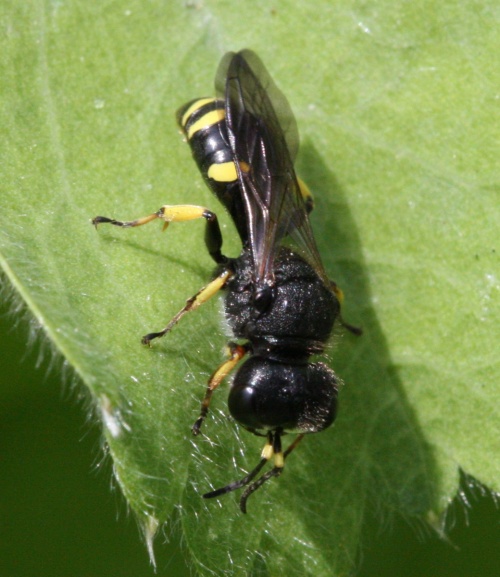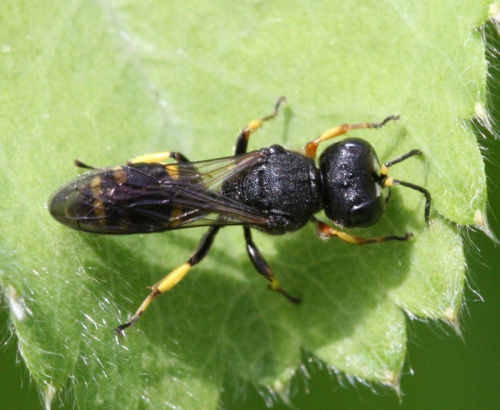Ectemnius continuus
8-14mm. The largest and most common of the British Ectemnius species. Generally black with yellow markings on tergites 1 and 3 and with all yellow tibiae.
Ectemnius species are difficult to separate so care needs to be taken with identification. It has the familiar black and yellow colouring associated with this group.
- thorax dull
- mesonotum with long hairs
- pronotum pointed at the corners
- top of propodeum with horizontal wrinkles which continue at the sides
- reduced yellow spots on tergites 1 and 3
Most solitary bees and wasps are difficult to identify, and can rarely be identified from photos taken in the field. All red-rated records should include a photo or set of photos of the specimen, illustrating the key characters taken from a standard key, which should also be referenced (e.g. ‘Falk, 2015’). The full set of key characters are generally not visible in field photos and photos are rarely sharp enough. To aid in the verification of your records, please include face shot, side, top and wings. The notes should state whether male or female, and explain how the specimen met the key characters. Although NS may not be able to identify the species even if these reference photos are provided, the photos will be stored with the record and may allow it be identified in future. Alternatively, NS will accept records identified by a recognised local or national expert, or that have been identified via BWARS’ Facebook https://www.facebook.com/profile.php?id=100065021433202 . If you have obtained this advice, please note the name of the person/organisation identifying the record in the ‘determiner’ field (e.g. ‘Stuart Roberts, BWARS Facebook’) rather than just a comment of ‘BWARS Facebook’.
Found in various habitats but perhaps most frequent where abundant supplies of dead wood and umbellifer flowers are available.
Early May to late September peaking in June, July and August.
They nest in wood, excavating tunnels with several cells which are then stocked with food (various flies and hoverflies) for the developing brood.
Widely distributed in Britain as far north as Fifeshire it is one of the most common Ectemnius species, especially in the south.
Thought to be fairly frequent in Leicestershire and Rutland, though not well recorded in our area.
Leicestershire & Rutland Map
Enter a town or village to see local records
MAP KEY:
Yellow squares = NBN records (all known data)
Coloured circles = NatureSpot records: 2020+ | 2015-2019 | pre-2015
UK Map
Species profile
- Species group:
- Bees, Wasps, Ants
- Kingdom:
- Animalia
- Order:
- Hymenoptera
- Family:
- Crabronidae
- Records on NatureSpot:
- 15
- First record:
- 14/06/2012 (Nicholls, David)
- Last record:
- 09/08/2023 (Pugh, Dylan)
Total records by month
% of records within its species group
10km squares with records
The latest images and records displayed below include those awaiting verification checks so we cannot guarantee that every identification is correct. Once accepted, the record displays a green tick.
In the Latest Records section, click on the header to sort A-Z, and again to sort Z-A. Use the header boxes to filter the list.




